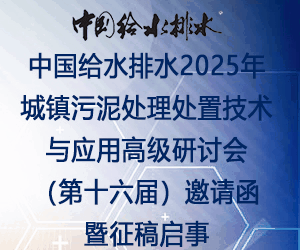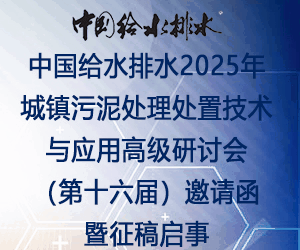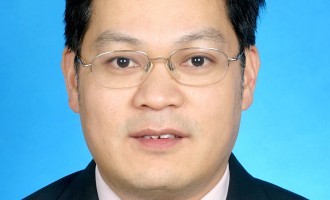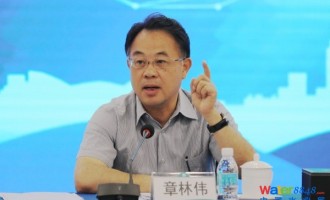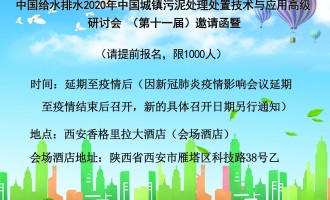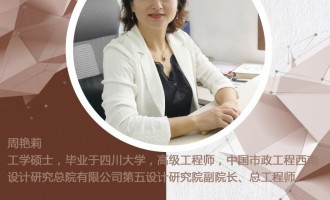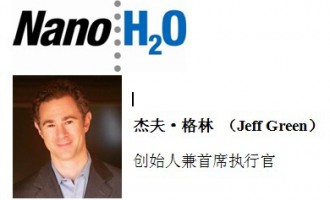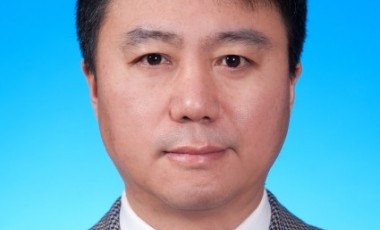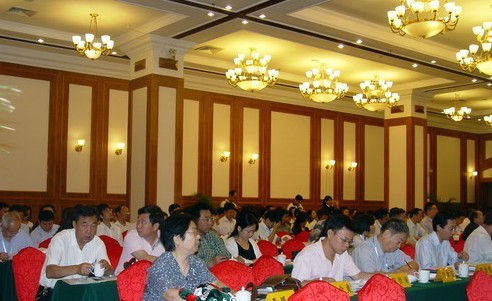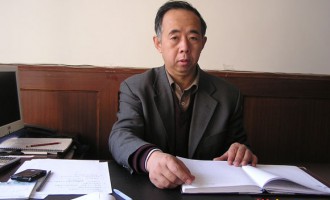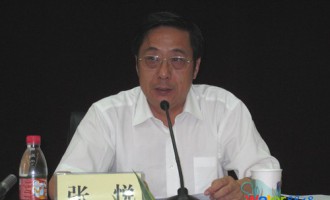-
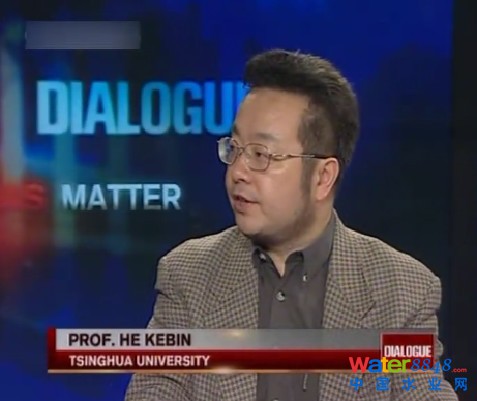
贺克斌,男,大气污染与控制专家。清华大学环境科学与工程系教授、博士生导师,长江学者特聘教授。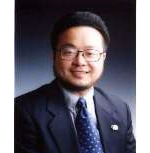
贺克斌
1962年8月出生于四川成都。1985年、1987年和1990年在清华大学分别获得环境工程学士、硕士和博士学位。主要从事大气污染与控制研究;应邀在丹麦技术大学(1993)、美国哈佛大学 (1996/1997/2001)和英国利兹大学(1998)等做高级访问学者和访问教授。近5年来主持和承担国家攻关、自然科学基金、科技部专项及北京市政府专项等课题9项,发表的学术论文有近50篇被SCI收录。1996年入选教育部“跨世纪优秀人才培养计划”,1998年入选人事部“百千万人才工程”、获“霍英东优秀青年教师基金”,2006年获“国家杰出青年科学基金”。获得省部级科技奖励5项。863计划重大项目“重点城市群大气复合污染综合防治技术与集成示范”专家组副组长、国家自然科学基金委员会评审专家组成员、中国能源研究会理事、中国可持续发展研究会理事、中国环境科学学会高级会员、美国空气与废物管理学会(AWMA)会员以及美国汽车工程学会(SAE)会员等。- 词条标签:
姓 名: 贺克斌
职 称: 双聘教授
办公电话: (86)10-62781889
电子邮件: hekb@tsinghua.edu.cn
工作经历:
1996.7至今 清华大学环境工程系 教授
1992.12- 1996.7 清华大学环境工程系 副教授
1990.8- 1992.11 清华大学环境工程系 讲师
教学经历:
先后开设本科生课程《大气污染控制工程》、研究生课程《大气污染控制原理》和《气溶胶力学》,目前开设研究生课程《能源与环境》
学术兼职:
1. 国际清洁交通技术委员会(ICCT)委员
2. 美国空气与废物管理学会(AWMA)和美国汽车工程学会(SAE)会员
3. 城市环境与城市生态编委
4. 中国能源研究会理事
5. 中国可持续发展研究会理事
6. 国家863重大项目“重点城市群大气复合污染综合防治技术与集成示范”总体专家组副组长
7. 国家自然科学基金委化学部学科评审组成员
研究方向:
大气污染与控制
科研项目:
在研项目:
1. 国家“973”计划项目二级课题(2005CB422201):我国酸沉降相关物质的排放特征及强度研究,2005.11-2010.11
2. 国家“863”计划课题(2006AA06A305):区域大气污染源识别与动态源清单技术及应用,2006.11-2010.12
3. 国家“863”计划课题(2006AA06A309)区域路网交通排放的诊断调控及大气复合污染前体物源排.2006.12-2010.12
4. 国家杰出青年科学基金项目(20625722):大气颗粒物碳质组分与复合污染形成机制, 2007.1-2010.12
5. 国家自然科学基金重大国际合作项目(20921140409):能源-排放-环境复杂系统模拟与控制机制研究,2010.1-2012.12
6. 长江学者与创新团队发展计划:区域复合大气污染与控制,2009.1-2011.12
7. 环保公益性行业科研专项:基于环境影响的中国NOx排放总量控制研究,2009.9-2012.9
已完成科研项目:
1. 国家“八五”攻关子专题(85-912-03-01-03):致酸物质适用控制技术的分析、筛选与评价,1991年1月至1995年12月。
2. 国家“八五”攻关子专题(85-912-03-02-06):柳州地区酸沉降管理系统研究,1991年1月至1995年12月。
3. 国家自然科学基金青年基金项目(59208074):干法脱硫工艺对燃煤飞灰电除尘特性影响的机理研究,1992年1月至1994年12月。
4. 教育部跨世纪优秀人才培养计划:酸沉降临界负荷与控制区划研究,1996年1月至1998年12月。
5. 国家“九五”攻关专题(96-910-03-03):典型城市汽车污染综合控制示范研究,1996年1月至1999年12月。
6. 美国通用汽车公司资助项目:北京大气PM2.5研究,1998年1月至2004年12月。
7. 国家环保总局与美国环保署合作计划项目:局地大气污染物和GHG减排的共同效益,2000年12月至2004年12月。
8. 国家“863”计划课题(2001AA640105):大气细粒子连续监测技术与设备,2001年12月至2002年12月。
9. 国家“863”计划课题(2003AA641030):大气细粒子采样技术与设备,2003年5月至2005年5月。
10. 国家自然科学基金项目(20322203):城市大气PM2.5水溶性有机物分析方法及污染特征研究,2004年1月至2004年12月。
11. 国家自然科学基金项目(20477020):典型城市雾过程对大气颗粒物物理化学特征的影响,2005年1月至2007年12月。
12. 国家自然科学基金项目(40675079):北京含碳细颗粒物来源的稳定碳同位素识别, 2007.1-2009.12
奖励荣誉:
1993 国家教委科技进步二等奖
1997国家环保总局科技进步一等奖
教育部科技进步二等奖
1999 国家环保总局科技进步二等奖
教育部科技进步一等奖
2000 北京市科技进步二等奖
2001 教育部科技进步二等奖
2007教育部自然科学奖一等奖
2009教育部科技进步奖一等奖
2009国家自然科学奖二等奖 (第一完成人)
2010年国家科技进步奖二等奖(第二完成人)
学术成果:
出版著作
1. 《大气污染控制工程实验》(高等教育出版社,1991,参加编写)
2. 《环境与贸易》(清华大学出版社,1998,第二译者)
3. 《城市机动车排放污染控制》(中国环境科学出版社,2001,第三作者)
4. 《大气污染控制工程》(高等教育出版社,2002,参加编写)
发表文章
英文期刊:
1. He, K., Y. Lei, X. Pan, Y. Zhang, Q. Zhang, and D. Chen (2010), Co-benefits from energy policies in China, Energy, in press
2. Wang, L.T., C. Jang, Y. Zhang, K. Wang, Q. Zhang, D. Streets, J. Fu, Y. Lei, J. Schreifels, K. He, J. Hao, Y.-F. Lam, J. Lin, N. Meskhidze, S. Voorhees, D. Evarts, and S. Phillips (2010), Assessment of air quality benefits from national air pollution control policies in China. Part I: Background, emission scenarios and evaluation of meteorological predictions, Atmos. Environ., in press.
3. Wang, L.T., C. Jang, Y. Zhang, K. Wang, Q. Zhang, D. Streets, J. Fu, Y. Lei, J. Schreifels, K. He, J. Hao, Y.-F. Lam, J. Lin, N. Meskhidze, S. Voorhees, D. Evarts, and S. Phillips (2010), Assessment of air quality benefits from national air pollution control policies in China. Part II: Evaluation of air quality predictions and air quality benefits assessment, Atmos. Environ., in press.
4. Huo, H., Q. Zhang, M. Q. Wang, K. He, and D. G. Streets (2010), Environmental implication of electric vehicles in China, Envrion. Sci. Technol., 44, 4856–4861
5. Li, C., Q. Zhang, N. A. Krotkov, D. G. Streets, K. He, S.-C. Tsay, and J. F. Gleason (2010), Recent large reduction in sulfur dioxide emissions from Chinese power plants observed by the Ozone Monitoring Instrument, Geophys. Res. Lett., 37, L08807, doi:10.1029/2010GL042594.
6. Shi, X., K. He, J. Zhang, Y. Ma, Y. Ge, and J. Tan (2010). A comparative study of particle size distribution from two oxygenated fuels and diesel fuel, Front. Environ. Sci. Engin. China, 4, 30-34.
7. Yang, F., J. Brook, K. He, F. Duan, and Y. Ma (2010), Temporal variability in fine carbonaceous aerosol over two years in two megacities: Beijing and Toronto, Adv. Atmos. Sci., 27, 705-714.
8. Wang, S., M. Zhao, J. Xing, Y. Wu, Y. Zhou, Y. Lei, K. He, L. Fu, and J. Hao (2010), Quantifying the Air Pollutants Emission Reduction during the 2008 Olympic Games in Beijing, Environ. Sci. Technol., 44, 2490-2496.
9. Zhao, Q., K. He, K. A. Rahn, Y. Ma, Y. Jia, F. Yang, F. Duan, Y. Lei, G. Chen, Y. Cheng, H. Liu, and S. Wang (2010), Dust storms come to Central and Southwestern China too: implications from a major dust event in Chongqing. Atmos. Chem. Phys, 10, 2615-2630.
10. Zhao, Q. K. He, K. A. Rahn, Y. Ma, F. Yang, and F. Duan (2010), Using Si depletion in aerosol to identify the sources of crustal dust in two Chinese megacities. Atmos. Environ., 44, 2615-2624.
11. Zhou, Y., Y. Wu, L. Yang, L. Fu, K. He, S. Wang, J. Hao, J. Chen, and C. Li (2010), The impact of transportation control measures on emission reductions during the 2008 Olympic Games in Beijing, China, Atmos. Environ., 44, 285-293
12. Chen, D., Y. Wang, M. B. McElroy, K. He, R. M. Yantosca, and P. Le Sager (2009), Regional CO pollution and export in China simulated by the high-resolution nested-grid GEOS-Chem model, Atmos. Chem. Phys., 9, 3825-3839.
13. Cheng, Y., K. He, F. Duan, M. Zheng, Y. Ma, and J. Tan (2009), Measurement of semivolatile carbonaceous aerosols and its implications: A review, Environ. Int., 35, 674-681.
14. Cheng, Y., K. He, F. Duan, M. Zheng, Y. Ma, and J. Tan (2009), Positive sampling artifact of carbonaceous aerosols and its influence on the thermal-optical split of OC/EC, Atmos. Chem. Phys., 9, 7243-7256.
15. Duan, F., X. Liu, K. He, and S. Dong (2009), Measurements and characteristics of nitrogen-containing compounds in atmospheric particulate matter in Beijing, China, B. Environ. Contam. Tox., 82, 332-337.
16. Fu, J., D. G. Streets, C. Jang, J. Hao, K. He, L. Wang, and Q. Zhang (2009), Modeling regional/urban ozone and particulate matter in Beijing, China, J. Air. Waste. Manage., 59, 37-44.
17. Huo, H., Q. Zhang, K. He, Q. Wang, Z. Yao, and D. G. Streets (2009), High-resolution vehicular emission inventory using a link-based method: a case study of light-duty vehicles in Beijing, Environ. Sci. Technol., 43, 2394-2399.
18. Liu H, K He, J M Lents, Q Wang, and S Tolvett (2009).Characteristics of diesel truck emission in china based on portable emissions measurement systems, Environ Sci Technol, 43 (24): 9507-9511
19. Liu, Y., D. Chen, R. A. Kahn, and K. He (2009), Review of the applications of Multiangle Imaging SpectroRadiometer to air quality research, Sci. China. Ser. D., 52, 132-144.
20. Okuda, T., T. Kuroda, T. Nara, K. Okamoto, Y. Okabayashi, D. Naoi, S. Tanaka, K. He, Y. Ma, Y. Jia, and Q. Zhao (2009), Development of automated column chromatography system and its application to the determination of polycyclic aromatic hydrocarbons in suspended particulate matter, Bunseki. Kagaku., 58, 287-292.
21. Shi, Z., K. He, Z. Xue, F. Yang, Y. Chen, Y. Ma, and J. Luo (2009), Properties of individual aerosol particles and their relation to air mass origins in a south China coastal city, J. Geophys. Res., 114, D09212, doi:10.1029/2008JD011221.
22. Tan, J., J. Duan, D. Chen, X. Wang, S. Guo, X. Bi, G. Sheng, K. He, and J. Fu (2009), Chemical characteristics of haze during summer and winter in Guangzhou, Atmos. Res., 94, 238-245.
23. Tan, J., J. Duan, K. He, Y. Ma, F. Duan, Y. Chen, and J. Fu (2009), Chemical characteristics of PM2.5 during a typical haze episode in Guangzhou, J. Environ. Sci-China, 21, 774-781.
24. Zhang, J., K. He, Y. Ge, and X. Shi (2009), Influence of fuel sulfur on the characterization of PM10 from a diesel engine, Fuel, 88, 504-510.
25. Zhang, J., K. He, X. Shi, and Y. Zhao (2009), Effect of SME biodiesel blends on PM2.5 emission from a heavy-duty engine, Atmos. Environ., 43, 2442-2448.
26. Zhang, Q., D. G. Streets, G. R. Carmichael, K. He, H. Huo, A. Kannari, Z. Klimont, I. Park, S. Reddy, J. S. Fu, D. Chen, L. Duan, Y. Lei, L. Wang, and Z. Yao (2009), Asian emissions in 2006 for the NASA INTEX-B mission. Atmos. Chem. Phys, 9, 5131-5153.
27. Zhang, Q., D. G. Streets, and K. He (2009), Satellite observations of recent power plant construction in Inner Mongolia, China, Geophys. Res. Lett., 36, L15809, doi:10.1029/2009GL038984.
28. Jia, Y., K. A. Rahn, K. He, T. Wen, and Y. Wang (2008), A novel technique for quantifying the regional component of urban aerosol solely from its sawtooth cycles, J. Geophys. Res., 113, D21309, doi:10.1029/2008JD010389.
29. Liu, H., K. He, D. He, L. Fu, Y. Zhou, M. P. Walsh, and K. O. Blumberg (2008), Analysis of the impacts of fuel sulfur on vehicle emissions in China, Fuel, 87, 3147-3154.
30. Okuda, T., M. Katsuno, D. Naoi, S. Nakao, S. Tanaka, K. He, Y. Ma, Y. Lei, and Y. Jia (2008), Trends in hazardous trace metal concentrations in aerosols collected in Beijing China from 2001 to 2006, Chemosphere, 72, 917-924.
31. Wang, L., J. Hao, K. He, S. Wang, J. Li, Q. Zhang, D. G. Streets, J. S. Fu, C. J. Jang, H. Takekawa and S. Chatani (2008), A modeling study of coarse particulate matter pollution in Beijing: Regional source contributions and control implications for the 2008 summer Olympics, J. Air. Waste. Manage., 58, 1057-1069.
32. Wang, Q., H. Huo, K. He, Z. Yao, and Q. Zhang (2008), Characterization of vehicle driving patterns and development of driving cycles in Chinese cities, Transport. Res. D, 13, 289-297.
33. Duan, F., X. Liu, K. He, Y. Li, and S. Dong (2007), Characteristics and source identification of particulate matter in wintertime in Beijing, Water Air Soil Poll., 180, 171-183.
34. Liu, H., K. He, Q. Wang, H. Huo, J. Lents, N. Davis, N. Nikkila, C. Chen, M. Osses, and C. He (2007), Comparison of vehicle activity between Beijing and Shanghai, J. Air Waste Manag.e, 57, 1172-1177.
35. Pan, X., W. Yue, K. He, and S. Tong (2007), Health benefit evaluation of the energy use scenarios in Beijing, China, Sci. Total Environ., 374, 242-251.
36. Shi, Z., K. He, X. Yu, Z. Yao, F. Yang, Y. Ma, R. Ma, Y. Jia, and J. Zhang (2007), Diurnal variation of number concentration and size distribution of ultrafine particles in the urban atmosphere of Beijing in winter, J. Environ. Sci-China, 19, 933-938.
37. Streets, D. G., J. S. Fu, C. J. Jang, J. Hao, K. He, X. Tang, Y. Zhang, Z. Wang, Z. Li, Q. Zhang, L. Wang, B. Wang, and C. Yu (2007), Air quality during the 2008 Beijing Olympic Games, Atmos. Environ., 41, 480-492.
38. Yao, Z., Q. Wang, K. He, H. Huo, Y. Ma, and Q. Zhang (2007), Characteristics of real-world vehicular emissions in Chinese cities, J. Air Waste Manage., 57, 1379-1386.
39. Zhang, Q., D. G. Streets, K. He, and Z. Klimont (2007), Major components of China's anthropogenic primary particulate emissions, Environ. Res. Lett., 2, 045027.
40. Zhang, Q., D. G. Streets, K. He, Y. Wang, Richter, Andreas, J. P. Burrows, I. Uno, C. J. Jang, D. Chen, Z. Yao, and Y. Lei (2007), NOx emission trends for China 1995-2004: The view from the ground and the view from space, J. Geophys. Res., 112, D22306, doi: 10.1029/2007JD008684
41. Duan, F., K. He, Y. Ma, F. Yang, X. Yu, S. H. Cadle, T. Chan, and P. A. Mulawa (2006), Concentration and chemical characteristics of PM2.5 in Beijing China: 2001-2002, Sci. Total Environ., 355, 264-275.
42. Okuda, T., D. Naoi, M. Tenmoku, S. Tanaka, K. He, Y. Ma, F. Yang, Y. Lei, Y. Tao, and D. Zhang (2006), Polycyclic aromatic hydrocarbons (PAHs) in the aerosol in Beijing China measured by aminopropylsilane chemically-bonded stationary-phase column chromatography and HPLC/fluorescence detection, Chemosphere, 65, 427-435.
43. Streets, D. G., Q. Zhang, L. Wang, K. He, J. Hao, Y. Wu, Y. Wang, and G. R. Carmichael (2006), Revisiting China's CO emissions after the Transport and Chemical Evolution over the Pacific (TRACE-P) mission: Synthesis of inventories atmospheric modeling and observations, J. Geophys. Res., 111, D14306, doi:10.1029/2006JD007118.
44. Duan, F., K. He, Y. Ma, Y. Jia, F. Yang, Y. Lei, S. Tanaka, and T. Okuta (2005), Characteristics of carbonaceous aerosols in Beijing China, Chemosphere, 60, 355-364.
45. He, K., H. Huo, Q. Zhang, D. He, F. An, M. Wang, and M. P. Walsh (2005), Oil consumption and CO2 emissions in China's road transport: current status future trends and policy implications, Energy Policy, 33, 1499-1507.
46. Wang, Q., K. He, H. Huo, and J. Lents (2005), Real-world vehicle emission factors in Chinese metropolis city – Beijing, J Environ Sci-China, 17, 319-326.
47. Yang, F., B. Ye, K. He, Y. Ma, S. H. Cadle, T. Chan, and P. A. Mulawa (2005), Characterization of atmospheric mineral components of PM2.5 in Beijing and Shanghai China, Sci. Total Environ., 343, 221-230.
48. Yang, F., K. He, Y. Ma, Q. Zhang, S. H. Cadle, T. Chan, and P. A. Mulawa (2005), Characterization of carbonaceous species of ambient PM2.5 in Beijing China, J. Air Waste Manage., 55, 984-992.
49. Yang, F., K. He, B. Ye, X. Chen, L. Cha, S. H. Cadle, T. Chan, and P. A. Mulawa (2005), One-year record of organic and elemental carbon in fine particles in downtown Beijing and Shanghai, Atmos. Chem. Phys., 5, 1449-1457.
50. He, K., F. Duan, Y. Ma, F. Yang, Q. Zhang, X. Yu, S. Cadle, and T. Chan (2004), Concentration level of fine airborne lead in Beijing, People's Republic of China, B. Environ. Contam. Tox., 72, 233-239.
51. Okuda, T., J. Kato, J. Mori, M. Tenmoku, Y. Suda, S. Tanaka, K. He, Y. Ma, F. Yang, X. Yu, F. Duan, and Y. Lei (2004), Daily concentrations of trace metals in aerosols in Beijing China determined by using inductively coupled plasma mass spectrometry equipped with laser ablation analysis and source identification of aerosols, Sci. Total Environ., 330, 145-158.
52. Yu, X., K. He, Y. Ma, F. Yang, F. Duan, A. Zheng, and C. Zhao (2004), Application of ion chromatography to the determination of water-soluble inorganic and organic ions in atmospheric aerosols, J. Environ. Sci-China, 16, 813-815.
53. Duan, F., X. Liu, K. He, Y. Yu, and L. Wang (2003), Atmospheric aerosol concentration level and chemical characteristics of water-soluble ionic species in wintertime in Beijing, China, J. Environ. Monitor., 5, 569-573.
54. He, K., H. Huo, and Q. Zhang (2002), Urban air pollution in China: Current status, characteristics, and progress, Annu. Rev. Energy Env., 27, 397-431.
55. Yao, X., C. Chan, M. Fang, S. Cadle, T. Chan, P. Mulawa, K. He, and B. Ye (2002), The water-soluble ionic composition of PM2.5 in Shanghai and Beijing, China, Atmos. Environ., 36, 4223-4234.
56. Fu, L. J. Hao, D. He, K. He, and P. Li (2001), Assessment of vehicular pollution in China, J. Air Waste Manage., 51, 658-668.
57. Hao, J., S. Wang, B. Liu, and K. He (2001), Plotting of acid rain and sulfur dioxide pollution control zones and integrated control planning in China, Water Air Soil Poll., 130, 259-264.
58. Hao, J., S. Wang, B. Liu, and K. He (2001), Designation of sulfur dioxide and acid rain pollution control zones and its impacts on energy industry in China, J. Chem. Eng. Jpn., 34, 1108-1113.
59. Hao, J., Y. Wu, L. Fu, D. He, and K. He (2001), Source contributions to ambient concentrations of CO and NOx in the urban area of Beijing, J. Environ. Sci. Heal A.,36, 215-228.
60. He, K., F. Yang, Y. Ma, Q. Zhang, X. Yao, C. Chan, S. Cadle, T. Chan, and P. Mulawa (2001), The characteristics of PM2.5 in Beijing, China, Atmos. Environ., 35, 4959-4970.
61. Chen, A., J. Hao, Z. Zhou, and K. He (2000), Particulate concentration measured from scattered light fluctuations, Opt. Lett., 25, 689-691, doi:10.1364/OL.25.00689.
62. Hao, J., D. He, Y. Wu, L. Fu, and K. He (2000), A study of the emission and concentration distribution of vehicular pollutants in the urban area of Beijing, Atmos. Environ., 34, 453-465.
63. Hao, J., K. He, and H. Chao (1990), Calculation of electric-field strength distributions for new electrostatic precipitator discharge electrode designs, J. Air Waste Manage., 40, 1510-1513.
64. Hao, J., S. Wang, B. Liu, and K. He (2000), Designation of acid rain and SO2 control zones and control policies in China, J. Environ. Sci. Heal. A, 35, 1901-1914.
贺克斌:良好的环境是贵阳发展的生态财富(图)
2013年07月22日 来源:贵阳新闻网
原标题:贺克斌:良好的环境是贵阳发展的生态财富(图)

贺克斌:大气污染与控制专家,清华大学环境科学与工程系教授、博士生导师,长江学者特聘教授。
昨日,在参加完生态文明贵阳国际论坛主题为“PM2.5危机:既然同呼吸,就要共奋斗”分论坛后,清华大学环境科学与工程系教授贺克斌寄语贵阳:“良好的自然环境是贵阳未来发展过程中的一个生态财富,不能让其因经济的发展而消逝。”
贺克斌并不是第一次来贵阳,在上个世纪90年代,他就来过贵阳:“当时贵阳的二氧化硫污染和酸雨情况比较严重,当时也是因为一个酸雨治理项目来到贵阳。”而时隔10多年以后,连续两年再访贵阳的他告诉记者,现在贵阳市的二氧化硫污染、酸雨污染情况已经得到了根本性的改变。
今年以来,在我国中东部地区持续陷入严重的雾霾天气时,贵阳的PM2.5指数排名一直是倒数,接近全国空气质量最优的三亚。“这个排名越靠前,说明PM2.5浓度越高,空气质量越差。”贺克斌说。他进一步介绍说,火电厂和大大小小的锅炉燃煤、机动车尾气排放和工业生产、严重的建筑扬尘等都是造成PM2.5污染的主要因子,每个城市具体是哪一项排在前面要根据详细的工业结构分析和数据支撑。
我国目前的发展阶段决定了我国正在经历着西方发达国家曾经经历过的高排放阶段。“我们通过调查发现,现在每个单位GDP所排放的PM2.5污染量在下降,然而PM2.5的绝对量却在上升。”贺克斌认为目前中国所采取的调整产业结构等措施的方向是正确的,但造成绝对量上升的原因是调整产业结构的力度还不够。
“此外,随着人们生活水平提高,越来越多的人会买车,所以即使是生产方面减排得到了控制,汽车这一部分的污染也在增加。”要治理好机动车的污染需要从车、油、路三方面着手,贺克斌认为,目前贵阳市采取了限行的方式来改善交通系统,限行使机动车尾气排放减少,会让贵阳环境得到改善,“总体说来,这符合目前国际的努力方向。”
“在贵阳的经济发挥后发赶超优势的同时,如何做到不让良好的生态环境因为经济的快速发展而消逝,是贵阳今后面临的一个巨大挑战,所以贵阳一定要选择好自己的发展模式,留住生态环境这一最大的财富。”贺克斌建议道


